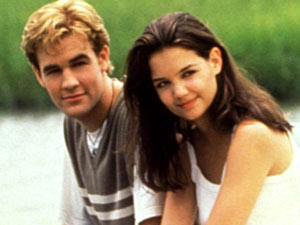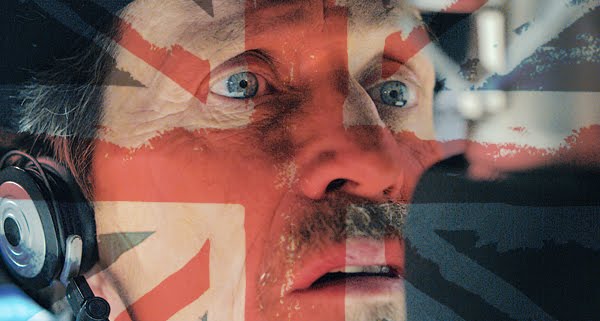 "The King who gave up his throne ... for the woman he loved"
"The King who gave up his throne ... for the woman he loved"
Introduction
Last year, during
The King's Speech, we see a little exposure on the parallel storyline between Guy Pearce and Eve Best portraying the free-spirited Wallis Simpson (Best) and the abdicating King Edward VIII. As a criticism of
The King's Speech, the characters remained quite 2D and ambiguous - the idea of abdicating and stepping down from such an important role in the monarchy for the love of a woman is a huge sacrifice. Furthermore, when the two left England after the King stepped down, Wallis only returned to England for the funeral of her husband in 1972. The production of
W.E. began at least a decade ago in Madonna's eyes, as she began research into the topic. James D'Arcy compared her knowledge of the subject-matter to director Peter Weir in the screening I attended, organised by the great folks at
LOVEFiLM. This is a personal project and the comparison between Madonna and Wallis is clear, but whether the story is effective is another story all together.
 Multiple Narratives and Ghost Stories
Multiple Narratives and Ghost Stories
In the first instance, this is not a normal biography. I only recently watched Chaplin and the one thing I disliked the most about the film was the cliche nature of the biopic that the story clung to. The more-recent The Iron Lady, I believe, has a similar set-up. The idea that an old-version of a historical-figure recounts their story whilst we, as viewers, see the flash backs and see the event's. The same structure is equally applied to fictional characters giving the story a sense of authority and truth - Saving Private Ryan and Titanic would be examples.
W.E. portrays three intertwining stories. We see the life of Wallis Simpson (Andrea Riseborough) and Edward (James D'Arcy) during the 20's, through the 40's. This runs parallel to a modern-day story of upper-class Wally (Abbie Cornish) as she obsesses over Simpson's life and visits and re-visits a Sotheby's auction house which are auctioning-off property of the their estate. The direct connection between the two is strikingly similar a both characters are initially in marriages they do not want to stay within - Wallis Simpson and her first Husband Ernest (David Harbour) and Wally with her doctor-husband William (Richard Coyle). We see, in both cases, how the marriages fall apart and the new men in their lives. Throughout, Wallis Simpson visits Wally to offer advice and to discuss profound issues in relationships and truth.
 Feminism and Characterisation
Feminism and Characterisation
Due to the multiple characters and constant back-and-forth between stories, we have very little time to truly understand the characters. It is very clear that the story bends to a strong feminist message, dictating that people criticise Wallis Simpson without criticising King Edward VIII. Madonna makes reference to how we discuss how much King Edward VIII "gave up" for Wallis Simpson, without discussing what she gave up for him. The same connects to the modern-day story as, though wally lives in a stylish, modern apartment and her Husband is intelligent and at the top of his game within the medical profession, it is she who loses out more as she is aware of his infidelities. The argument about how, if you decide to marry into a successful partner, there is an automatic expectation to support them, opposed to an equal-footing within a relationship.
Unfortunately, our perspective is limited to thorough characterisation of Wally and Wallis, with very little to understand Edward, Ernest and William. These are merely summarised as Edward the "besotted man", Ernest the "abusive-but-regretful" ex and William the "cheating Husband". With this in mind, our love-interest for Wally is Evgeni (Oscar Isaac). He is likable but remains flat. An intelligent Russian "slumming it as a security guard" we are told. With this in mind, he seems to live in an expensive New York apartment, trained as a classical pianist, he even owns a piano. This complete inconsistency is where the film fails as we cannot relate to any of the characters. Even Wally's obsession with Wallis appears to be more a problem than a sensible interest. Not to mention, how can anyone condone spending $11,000 on gloves! If we understood the life of luxury, we may understand such an extravagant purchase, but we know so little. At one point, we see a speech whereby a character comments on being rich and shameless - as another pipes up "What's wrong with being rich and shameless?". Everyone laughs. Late into the film, we see how violent Wally's husband is and this changes our perspective a little - but it is too late as we have watched our rich-girl wander around the auctioneer's upset about how difficult her life is without any clear example about the challenges she faces. For one, she doesn't even have to work!
 Trying Too Hard
Trying Too Hard
Technically, Madonna is confident and clear. It is unfortunate that many sequences seem to have no clear purpose or reason as to the stylistic choice. In one instance, the camera follows D'Arcy and Simpson to a tree, whereby moments later, we move vertically and up the tree. Another music-video choice is used when wally first visits Evgeni's apartment. He plays the piano and the sequence continues as the music continues but the couple start dancing - all fair and well in a music-video, but within the film, who is paying the piano? what are they dancing to? Are they dancing in silence? Maybe these decisions would not be an issue if I was swept along with the story, but it seemed that time and time again, I witnessed an unnecessary flourish or transition that seemed to actively stop the smoothness of the story.
Having said that, the costume-design is superb and I could easily imagine a nomination for Costume-Design alone. Every costume worn by our characters were perfectly styled around the actors and, specifically, without the use of technology or obvious signals to clarify which time period we were in, the costume served to establish the context.
 Letters To End
Letters To End
There are many strong and engaging aspects to the film that shows how Madonna should continue to make films and learn from the mistakes already made. Unfortunately, the flaws seem to highlight issues which may not be resolved so easily. To close the film, there is a sequence whereby Wally manages to read letters written to an aunt from Wallis - revealing a side to Wallis we never knew. This is shot exquisitely and the reveal is a fascinating issue to raise in the closing act - ensuring conversation post-screening. But the entire letter plot seemed tacked on at the end - as if it was an after-thought.
It is clear that Madonna found a fascinating story and thought in depth about how the film would look - without considering how the film would flow. Therefore the story seems to drag on towards the end, the characters are flat and 2D whilst the camera-moves without purpose or meaning. And its a shame, because it could have been brilliant.
 As I write for a couple of blogs, there are the odd articles which are not re-published on this blog and rather than inundate you with retweets, a simple overview and a link to the relevant post should suffice. I am sure that you have had enough Top 10 Films of 2011 from me - but if you don't know, there are further details on Man I Love Films. I won't republish it here as I would assume you've listened to the podcast if you read this blog.
As I write for a couple of blogs, there are the odd articles which are not re-published on this blog and rather than inundate you with retweets, a simple overview and a link to the relevant post should suffice. I am sure that you have had enough Top 10 Films of 2011 from me - but if you don't know, there are further details on Man I Love Films. I won't republish it here as I would assume you've listened to the podcast if you read this blog.





























